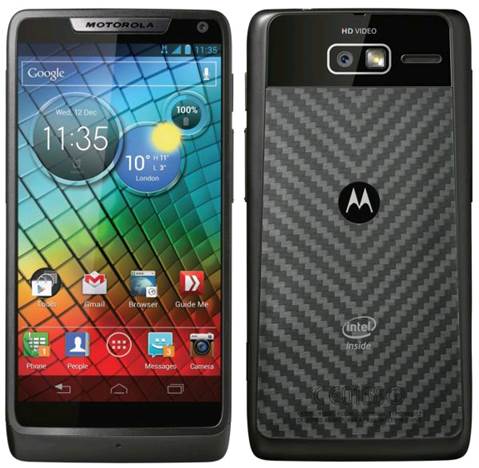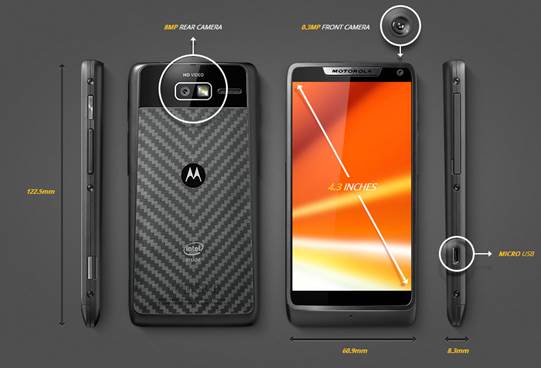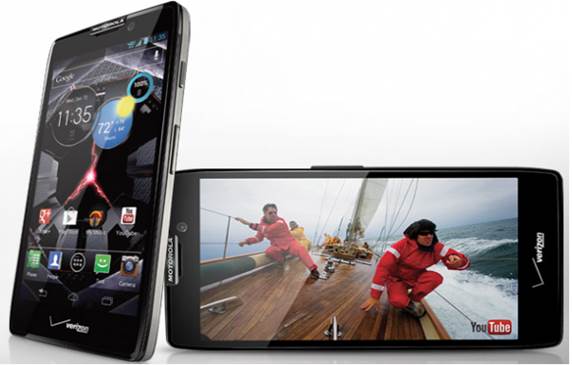If you are feeling unsure whether you have
read this title before, so do we. RAZR i is a next version of Droid RAZR M of
Motorola that's appeared in Europe and South America with a few differences.
However, it is mainly cut from the same Kevlar cloth: you will see a 4.3-inch
AMOLED screen with qHD (960 x 540) resolution, an 8-megapixel rear camera, a
2,000mAh battery and 5GB of built-in storage - with a microSD slot for
expansion.
So, you may ask where the differences are.
On the outside, the RAZR i has a physical, two-stage camera button. It’s a good
addition, but Intel states that its 2GHz processor is the main part where you
should be aware of. It’s the highest-speed Medfield we have ever seen – perhaps
the most important thing is it is placed inside a mobile phone. We have been
through a long way from Orange-branded San Diego. So, how this phone compare to
the RAZR M, which is powered by Qualcomm (with LTE supported)? This new version
of Intel would impress us in the same way? Let’s find out.

Motorola
RAZR i
Hardware
RAZR i is also as cute as RAZR M. It has
the same aluminum edges wrapping around a 4.3 inch screen and the same sloping
chin. The device looks kind of tough; this is because of the special Kevlar
backside of Motorola, although the aluminum rims begin to show itself
underneath the black paintwork after some light scratches. However, the Gorilla
Glass-coated screen remained unfazed while it is placing in our pockets or on
our desks. The battery cannot be detached away from the phone and the only
access offered by the phone is the wafer-thin panel covering the micro-SIM and
microSD slots. The micro-USB port, is also found along the left side, left
uncovered, but Motorola had the foresight to bathe both the surface and
internal circuitry in a water-resistant coating, which should stand up to the
wet weather conditions that many Europeans would find it very useful in the
winter.
On the right edge, the power button
continues to use the concentric metallic finish found on other RAZR devices,
with the volume rocker matching the plastic of the handset's shell.
Additionally, the RAZR i gets treated to a physical camera button, something
that was left off the RAZR M. The device has all default on-screen Android
keys, which appear glowing on that Super AMOLED display.
There is a 0.3MP front-camera located to
the right of the Motorola logo, while the main 8MP camera is placed in the center
of the top half of the backside, with a flash light to come with. As before,
the phone contains the same plastic panel as the loudspeaker. Below that, at
the back of the phone, the woven Kevlar shows off more Motorola branding and a
brief description of the Intel processor. There's no carrier branding on this
one and due to the lack of it, no mention of 4G LTE either. The phone has a
pent band GSM radio, meaning you could either runs it on AT&T or T-Mobile's
networks (WCDMA 850/900/1900/2100 and GSM 850/900/1800/1900 900/2100) though
you'll only be dealing in HSPA+. On Speed Test, we recorded that the maximum
speed achieved was around 4.5 Mbps down and 800 Kbps up -- on par with other
devices.

The
front and rear views of RAZR i
The device is as thin as you'd expect for a
RAZR product, and if we have any complaint, it's with Motorola's attempt to
introduce this as an "edge-to-edge" display. The side bezels are very
easy to see, if thankfully narrow (the iPhone 5 has a similarly waifish framing
to its display as well). It just isn't edge-to-edge. If it does have one edge,
it must be a jaggy one - we're talking about the rough renderings produced by
the PenTile setup. While the Super AMOLED performs its features on those
on-screen blacks, you'll still suffer some pixilation woes if you zoom in too
close to the qHD (960 x 540) surface.
Camera
Once again, Intel has spent a lot of
efforts to improve the performance of the camera in most of the phone it
powers. The feature called Burst Shot is an amazing thing in San Diego – it had
a good impact on us as one of the best apps for high-level smartphone; and the
10-shot option has also carried over. Unfortunately, the smartphone Orange is
not a smart choice for taking good photos, a shortcoming the RAZR i ably dodges.
As we did the review on RAZR M, RAZR i uses an 8MP auto-correction lens and the
color balance works fine in general.

Stunning
HD display
The phone misses out on white balance
options, and while colors were pleasantly saturated, you'll find it sometimes
gets it quite wrong, as you can see in the bluish woven table mat featured in
the sample gallery. There's some consolation in the functional photo editor,
which allowed us to balance warmth to more sensible levels. There's also an
optional HDR mode, which the phone will even suggest itself in low-light
conditions, although we found worse lighting dictated noisier results. See for
yourself in our gallery, but the HDR results are pretty good, offering detailed
highlights that would have otherwise been lost.
Video performance is acceptable -- the
camera's autofocus takes its time to lock on and tap-to-focus only works on the
whole image, you can't choose to focus on something that isn't already within
the center of the frame. Audio recording, on the other hand, is awesome and
played back quite well both on the RAZR i and bigger screens.